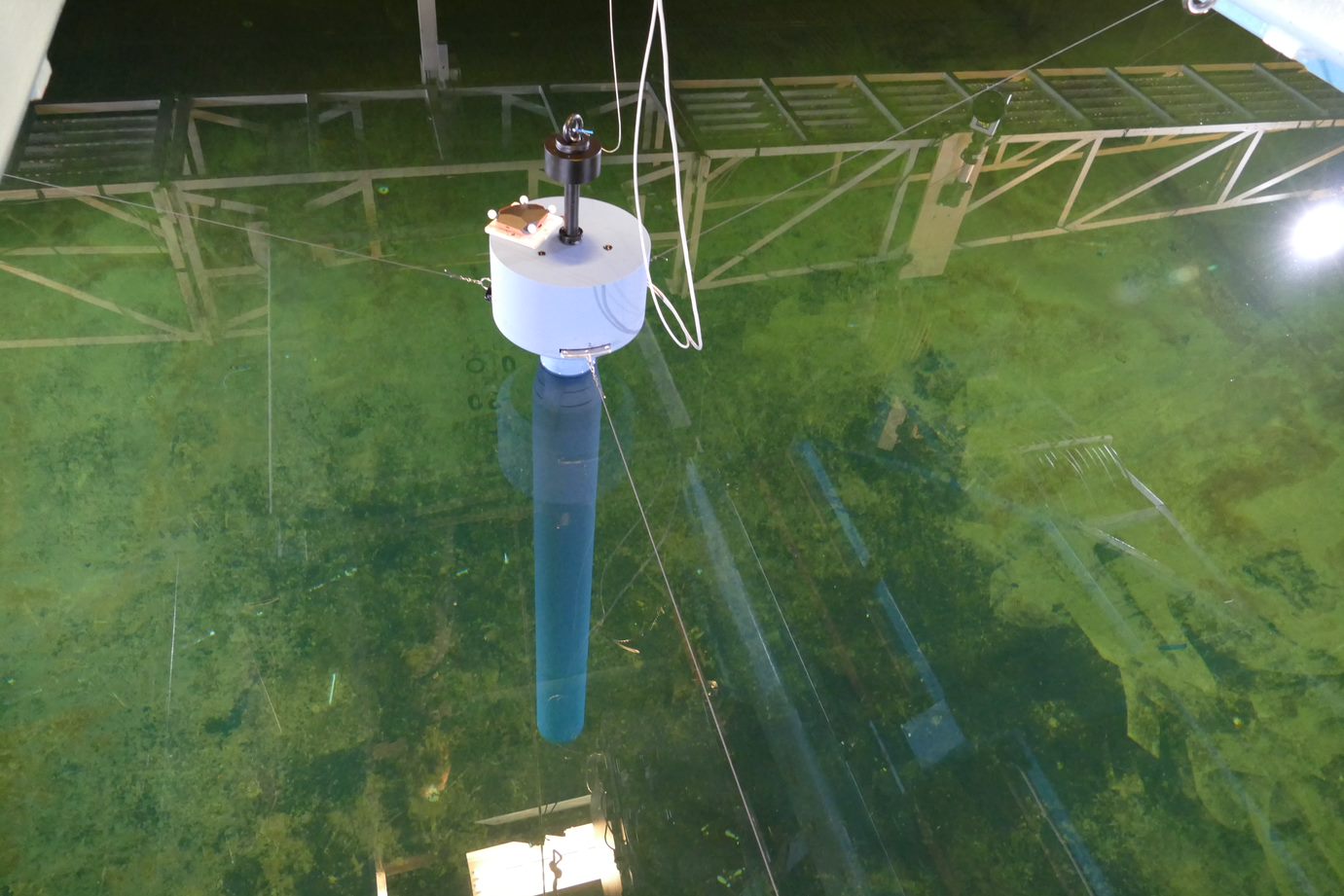Tank tests performed at SSPA
At the end of November, the SeaTwirl team visited SSPA, located at the Chalmers University of Technology's Johanneberg campus, Gothenburg, to perform tank tests on our wind turbine's floater.

The SSPA’s Maritime Dynamics Laboratory simulates maritime environments with waves and currents. The model tested had a scale corresponding to 1:40 of S2x, approx., 2,5 meters high including a weight to simulate the top structure. The tests were conducted to confirm our own simulations of anchoring forces, the Magnus effect, and the structure’s movements. The tests were conducted in combinations of currents, waves, and rotational speeds, recording all the data, dependently and independently of each other.
In the videos below, you will see three different tests from SSPA: Decay test, Magnus effect and tests with waves.
Decay test
A key parameter for hydrodynamic analyses is the heave period, which is why a stationary test was carried out. The test was conducted to validate the heave period of the structure. The method involved lifting the model slightly and subsequently allowing it to fall, and then measuring the heave periods until the model was stationary again.
The time it takes for the structure to move from the highest point to the lowest point is critical. If there is a risk that waves hitting the structure have the same interval as the heave period, the motion will get significantly larger.
The result was a longer period than assumed in the simulations, which is very positive as it reduces the risk of large heave motions.
Magnus effect
Rotating the floater as done by SeaTwirl on S2x, is relatively unique and gives rise to the Magnus effect, which occurs when water surges onto the rotating structure. The Magnus effect results in a force that is perpendicular to the surge direction on a rotating cylinder. A key feature of the tests performed was to investigate how the Magnus effect is impacted by rotational speeds, waves, and currents for S2x.
The tests were first conducted without waves with a current, which was simulated by dragging the structure in the tank. The Magnus effect is a lot higher in model scale than it will be in full scale so it was easy to see how the structure would lean sideways to the current. When these tests were complete, the same tests were conducted with varying wave heights and wave intervals.
The results of these tests were manifold, but one initial significant result is that it is evident that the approach adopted by the team is close to reality, which is very positive. In addition, the result will be used to refine our simulation models for future simulations.
Test with waves
The tests with waves are done to investigate how the different parameters affect the motions of the turbine. When you have a spinning structure it will have a momentum inertia, creating a centrifugal force that cause gyroscopic effects. The gyroscopic effect in combination with Magnus effect was investigated with regular waves. Our simulations tools are now tuned to incorporate the findings which will reduce the loads on the full system. The wave height and periods tested are based on the planned site in Norway where S2x will be installed.